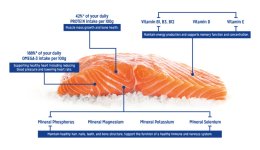At a depth of 10,000 feet, where sunlight barely penetrates, lives a creature so alien it seems straight out of a horror movie. Known as the telescope fish, this deep-sea marvel has bulging eyes adapted to detect the faintest glimmers of light in the abyss.
Its eyes protrude like telescopes, giving it a nearly 360-degree vision — a critical survival tool in the pitch-black depths of the ocean. Despite its monstrous appearance, the telescope fish is harmless, feeding primarily on plankton and smaller fish that wander too close.
Scientists have been fascinated by how evolution has sculpted life in extreme environments. The telescope fish’s anatomy demonstrates the remarkable adaptations required to survive immense pressure, freezing temperatures, and perpetual darkness.
Beyond its creepy looks, this species provides crucial insights into deep-sea ecosystems, highlighting the diversity and resilience of ocean life far beyond human reach.

Its eyes protrude like telescopes, giving it a nearly 360-degree vision — a critical survival tool in the pitch-black depths of the ocean. Despite its monstrous appearance, the telescope fish is harmless, feeding primarily on plankton and smaller fish that wander too close.
Scientists have been fascinated by how evolution has sculpted life in extreme environments. The telescope fish’s anatomy demonstrates the remarkable adaptations required to survive immense pressure, freezing temperatures, and perpetual darkness.
Beyond its creepy looks, this species provides crucial insights into deep-sea ecosystems, highlighting the diversity and resilience of ocean life far beyond human reach.



















